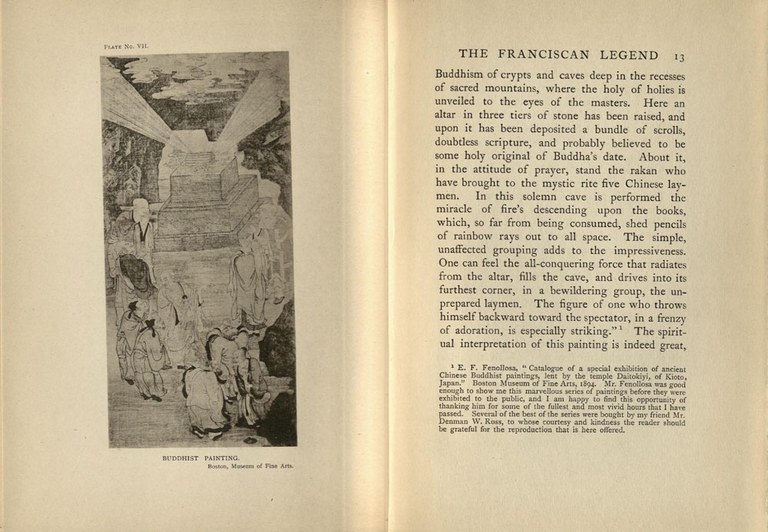Lavinia Amenduni // Formal comparisons between Western and Far Eastern art The time and space of comparisons (1890-1955)
Ernest Fenollosa’s Epochs of Chinese and Japanese Art (1912) is considered one of the first systematic and comprehensive works on Far Eastern art ever published in the West. Although it might be rightfully considered outdated on many aspects, it is without doubts a groundbreaking work that allowed the study Asian art through its own historical development for the first time. However, it will only take a quick look to notice the persistent presence of Western artists, movements and visual categories. The gracious figures of the Buddhist pantheon find proper companions only in Fra Angelico’s angels, while the muscular sculptures of hellish demons inevitably summon Michelangelo as a fitting comparison. The Kuse Kannon from the Hōryū-ji Temple in Japan brings to Fenollosa’s mind a layered and complex mix of images as he compares the statue to archaic Greek art, Leonardo’s Mona Lisa, Egyptian statuary, and a Gothic statue of Amiens.  Those comparisons can be seen as an explosive starting point a trend that can be followed as it spread through every Western country. In particular, Fenollosa’s direct influence can be identified in art historians and archaeologists, even stretching to literary critics, in the USA and Italy, where the enthusiasm for Fenollosa’s new approach to Asian art was mediated by Bernard Berenson as well as by Osvald Sirén.
Those comparisons can be seen as an explosive starting point a trend that can be followed as it spread through every Western country. In particular, Fenollosa’s direct influence can be identified in art historians and archaeologists, even stretching to literary critics, in the USA and Italy, where the enthusiasm for Fenollosa’s new approach to Asian art was mediated by Bernard Berenson as well as by Osvald Sirén.
The immediate question that can be raised is about the hermeneutical legitimacy of those comparisons: do they work for the reader, and what do they manage to convey about the artwork? Far from the positivist ontology that supported those scholars, who saw those comparisons as a way for Form to manifest itself throughout different moments and places of art history, I suggest that only one time and space comes forward from comparing: the time and the space of the critic.
The question about how the critic’s ideologies, expectations and preconcepts came together as a whole hermeneutical entity is the core of my research: indeed, if we claim that comparisons take place in the time and space of the critic, we need to ask ourselves what kind of categories they consist of. At this scope, as a working hypothesis, I am proposing to study the time of the critic through the tripartite division of the Classic, the Spiritual, and the Modern. Instead, the space of the critic can be divided into the written essay, photography, and physical exhibitions, all three representing neutral and West-tailored ‘places of displacement’.
Comparisons are hardly an object of research today. The scarce interest in comparisons as an historical phenomenon, as well as in the intellectual genealogies that promoted them, is testified by the virtually inexistant bibliography on the topic. However, the issue is hardly a concluded phenomenon of past historiography: it demands instead an ethical as well as an epistemological reconsideration of the act of comparing. As the concept of global art history hovers over our discipline, often simply applying Western methods and perspectives to non-Western phenomena, we are called upon to look back to the origins of global art history. By studying comparisons between Western and Far Eastern art as one of the first tentative narrations of art history as global, we might gain a new perspective on art history as an inherently Western institution, and we might better understand the complexity beneath the act of vision, as well as its fundamental role in the work of the art historian.
[Caption: A page of Bernard Berenson’s A Sienese painter of the Franciscan legend (London 1910), depicting Zhou Jichang’s Lohan Demonstrating the Power of Buddhist Sûtras to Daoists]
